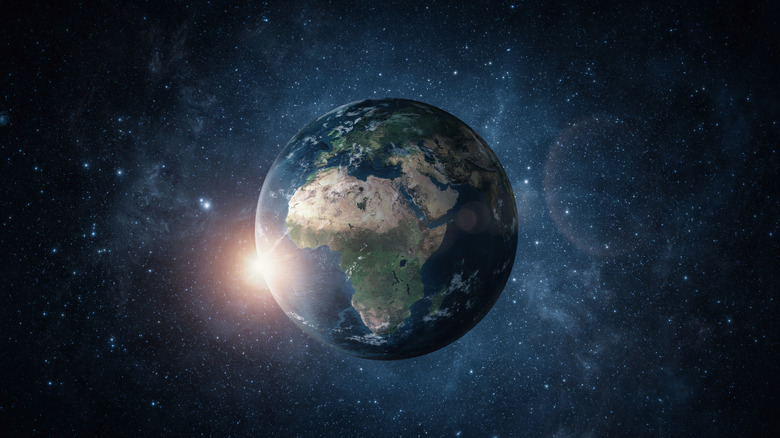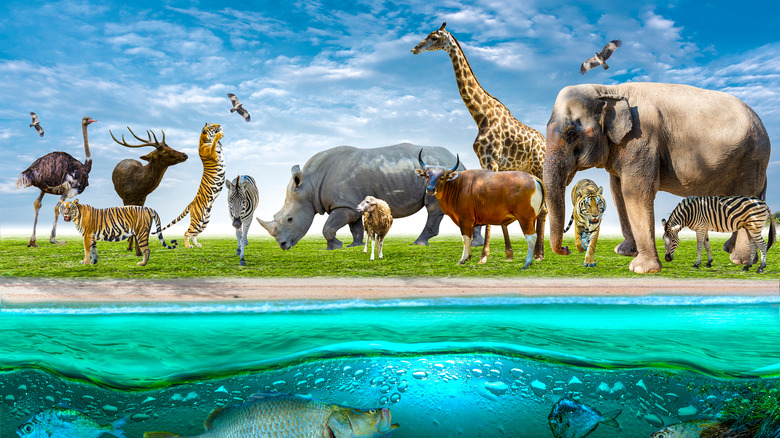You'll Never Guess What Percentage Of Life On Earth Is Yet To Be Discovered
The solar system is rich with planets that seem completely uninhabitable. Some are too hot. Others are too cold. In some parts of outer space, it's raining too many diamonds for any living beings to survive without being pierced to death by gemstones (via BBC). On outer-lying exoplanets like HD 189733b, glass shards pour sideways from the sky in flurries of sharply pointed storms, per ZME Science. In stark contrast, there is Venus, which is virtually untouched by precipitation and sports a surface that's a searing 863 degrees Fahrenheit, EarthSky reported.
However, there is one planet just a few down from the sun that has a bit of a Goldilocks atmosphere — it is neither too hot nor too cold. The rain is soft and pleasant. The sun is just bright enough to light the way, but not so bright that everything catches fire.
As you might have guessed, this planet is Earth, and it is absolutely bursting with life. What you might not know is that most of that life is a total mystery to those of us who inhabit the planet. Perhaps our primal fear of the unknown is not unfounded, but rooted in the fact that we know so little about this place that we call home.
86% of land species on Earth are undiscovered
Nature reported in 2011 that approximately 86% of Earth's land species are undiscovered. This biodiversity estimate is the product of a scientific prediction system that gives us a better idea of just how much we don't know. According to the method, which utilizes an analysis of the current taxonomic classification, we have observed, classified, and recorded only 1.2 million of the approximated 8.7 million land species. Of course, this is all speculative, but at the rate we're going now, it would take us almost five more centuries to discover the true secrets of the ecosystem sprawling at our feet.
Bob May, a zoologist at the United Kingdom's University of Oxford, explained that pinpointing a ballpark figure for how many animals might really be on Earth is of profound importance. In his words exactly: "Without this knowledge, we cannot even begin to answer questions such as how much diversity we can lose while still maintaining the ecosystem services that humanity depends upon."
While the method of calculation used in the Nature study has its limits and critics, it's a start. At the very least, it proves that the great beyond is much closer than it initially appeared.
91% of Earth's sea creatures are undiscovered
Using the same taxonomic classification method in the Nature study, scientists proclaim that even more of our sea is unseen. According to one PLOS Biology study, which was published online by the U.S. National Library of Medicine, a jaw-dropping 91% of all aquatic species remain undiscovered and unclassified. National Ocean Service reports that this is mainly due to the fact that more than 80% of our oceans have yet to be been explored — let alone documented, mapped, and charted.
When you consider the fact that there are rivers in our oceans, oceans in our planet's core, and perhaps even a whole other planet tucked neatly within our own (via Discover Magazine), it becomes clear that we are merely peering out through a slit in the blanket that is our universe, using an infinite number of educated guesses as our truth. We stare out into a swirling cosmic sea. We tilt our telescopes at stars that died a billion years ago. Eternity blinks back.


